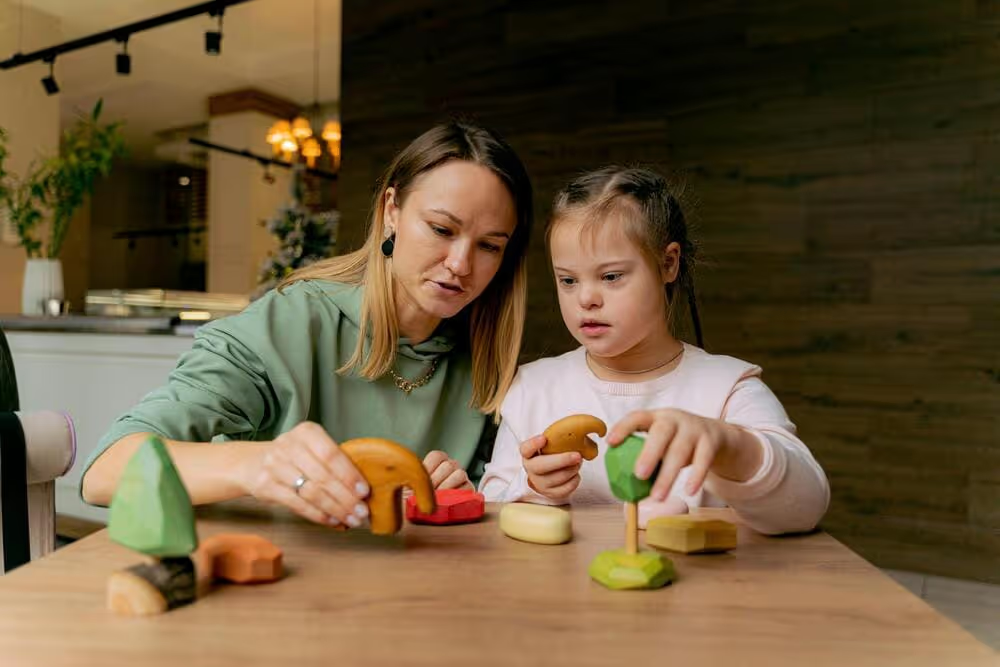
You’ve reviewed the resumes, had some amazing conversations, and now you’re heading into the final, most important step before offering your dream employee a job in your home: the multi-day nanny trial. This isn’t just a quick meet-and-greet; it’s a paid, working interview where a candidate might be flying in and staying in your home or a nearby hotel for several days.
Let’s be real, that can feel like a huge deal for everyone involved. And it is!
Trials can feel high-stakes and high-pressure - but they don’t have to be stressful. Think of this as your game plan for turning a potentially awkward week into a relaxed, revealing, and genuinely helpful experience. We’ve been through this countless times with families and nannies, and we’ve poured all our best advice here to help you set the stage for success.
Phase 1: The Prep — Before Your Guest Arrives
A little thoughtfulness before the candidate hits your doorstep goes a long way. The goal is to create a welcoming environment that provides an authentic snapshot of your family’s life, making them feel like a respected professional and a welcome guest in your home, not like the help or an uncomfortable hotel guest.
Talking to Your Kids: Frame the Visit with Honesty and Excitement
This is your most important job. How you introduce this multi-day visit will shape your child's entire experience - as well as how they react to the new person entering your home. We’ve seen the big feelings of the tiny humans in your house either set things off on a great foot, or add stress to everyone’s plate within the first few minutes. Your role is to be their trusted guide, framing the visit with a tone that is light, positive, and age-appropriately honest.
For Infants and Toddlers (0-2): Easing into Separation
For the littlest members of your family, this process is less about conversation and more about observation and routine. They operate on feelings, trust, and predictability. If you’ve been their primary caregiver since day one, the idea of a new person taking over, even for a few hours, is a massive shift in their world. The key to a smooth trial is to gently practice separation before the candidate even books their flight.
The goal is to teach them a fundamental concept: You leave, and you always come back. This builds the foundation of security they need to accept care from another trusted adult.

Practice with Low Stakes:
Weeks before the trial, start introducing other caregivers. Have a grandparent or a trusted local babysitter come over for an hour while you run an errand. The goal is to make being cared for by someone other than you a normal, non-alarming experience.
Build Up Duration:
Gradually increase the length of these separations—from one hour to a whole morning, then to an afternoon that includes a nap. This helps your child build their "separation stamina."
Create a Goodbye Ritual:
Even for infants, a consistent ritual is reassuring. A quick, cheerful, "Bye-bye, I love you, I'll be back soon!" followed by a kiss and a wave is perfect. The most important part? Don't sneak out. While it feels easier in the moment, it can create anxiety for a child who looks up and finds you’ve suddenly vanished.
Model Confidence:
Your baby takes all their cues from you. When you hand them over to the trial candidate, do it with a warm smile and a calm energy. If you seem relaxed and confident, you are non-verbally telling your child, "This person is safe. We are all okay."
During the trial itself, your presence is a bridge. Allow the candidate to take over a feed or playtime while you’re still in the room, then gradually give them more space by stepping into the next room. It’s all about a slow, reassuring transfer of trust.
For Younger Children (2-4): Building a Bridge of Trust

For toddlers and preschoolers, you are still the center of their universe, but now they have the language to talk about their big feelings. A new person entering their space can bring up separation anxiety and clinginess. It’s not personal to the candidate—it’s a sign of their healthy attachment to you.
Your goal is to continue being that bridge of trust. By showing your child that you like and trust this new person, you give them the social and emotional cues they need to do the same.
Frame it as a Fun Visit:
Keep the language simple and exciting. This isn’t about hiring a "nanny"; it’s about a "new friend" coming to play.
Create a Connection Through You:
Talk about the candidate before they arrive. Show your child a picture or introduce them during a short Zoom call prior to the trial. Refer to them as “Mommy’s friend” or “Daddy’s helper.” This creates a positive association in their mind before they even meet.
Acknowledge Feelings and Reassure Constantly:
Validate their feelings while remaining a calm, confident leader.
Here are some talking points you can use:
“Guess what? I have such exciting news! A new friend named [Candidate's Name] is coming to play with us for a few days! She is so much fun and she can’t wait to see your amazing block tower.”
When you're about to step out of the room:
“Okay, I’m going to be in my office for a little bit, and [Candidate’s Name] is going to stay and play. I know it can feel a little strange when I leave, but I’m right here, and I’ll be back to see you soon. Why don’t you show her your favorite blue dinosaur?”
For Older Children (5+): Navigating Big Feelings & von Trapp Attitudes
With older kids, the conversation gets more complex. They’re old enough to understand the gravity of a new person joining the family dynamic, and that can bring up some big feelings—or even some Sound of Music-style schemes to scare off the newcomer.
It often comes from a sweet (if misguided) place: the hope that if no nanny works out, it means they get more one-on-one time with you. This is your chance to get ahead of any hazing-type behavior by being both reassuring and clear about the goal. This isn’t about "testing" a candidate; it's about genuinely getting to know them.
Acknowledge Their Role:
Start by letting them know their opinion is a huge part of this decision. This gives them a sense of ownership and importance.

Clarify the Goal:
Explain that the purpose of the trial is to see if this person is a good fit for everyone, including them. Frame it as a "get-to-know-you" week, not a test.
Set the Boundary:
Be loving but direct. Let them know that you see them and understand their feelings, but that the family will be hiring a nanny to be part of your team. If this candidate isn't the one, you'll meet another.
Here are some talking points you can weave into a conversation:
“I have some exciting news. We’re going to have a guest for a few days! Her name is [Candidate’s Name], and they are a nanny we’re getting to know. The whole point of their visit is for all of us to see if they feels like a good fit for our family. Your feelings are a super important part of this, and I really want to know what you think after they leaves.
Now, for the important part: Our goal is to make them feel welcome and get to know them, not to try and trick them or scare her off. I know change can feel weird, and you might think that if a nanny doesn't work out, I'll just stay home. I want to be clear that we will be hiring a nanny to help our family, and this process is about finding the right person for our team. If it's not [Candidate's Name], we'll meet someone else. What I need from you is to be your wonderful self so we can all figure out if they’re the right teammate for us.”
Setting the Scene: Hospitality is Key

When a candidate is traveling to your home, preparing their space is the first step in building a great relationship. While it can be tough to walk the line of having a house guest who is also a potential employee, there’s a lot of space between setting the expectation that you or your other household employees will be waiting on this person, and between someone feeling like their very presence is an imposition or nuisance to your family. (Note: for live-in roles, we always recommend opening up the nanny’s living space during their trial so they can truly get a feel for what saying “yes” at the end of the trial will mean in their new home!)
The Guest Space:
Whether it’s a room in your home or a hotel, make sure it’s clean, comfortable, and ready for their arrival. Think fresh linens, clear surfaces, and easy-to-find outlets. Make sure they have clear expectations on how to get to and from an airport or train station to your home or the hotel if necessary (whether it’s Uber/a taxi or getting collected by a car service, an assistant, or you!)
A Welcoming Touch:
If you have time, leaving a few snacks, bottled water, a favorite local treat, and/or a handwritten note can make a world of difference.
Pro Tip:
Have the Wi-Fi password written down and ready! It's a small detail that shows you’ve thought ahead and respect their need to connect with their own friends and family back home.
Planning the Week: Stick to Your Real Rhythm
A multi-day trial isn't the time to plan a whirlwind of brand-new, exciting activities. The point is for the candidate to see what your real life looks like and for you to see how they fit into it.
Embrace the Ordinary:
Stick to your regular schedule—school drop-offs, nap times, trips to your usual park, and even a grocery run. This gives the candidate a genuine feel for the job.
Communicate the Flow:
Give the candidate a loose itinerary for the week so they know what to expect. Something like, "We usually do the park in the morning and have quiet time after lunch. On Tuesday, we have a music class at 10 am."
Schedule Downtime:
This is a working interview, but everyone needs a break. Be clear about when the candidate will have off-duty time to recharge, explore the neighborhood, or call home.
Phase 2: The Main Event — Living and Learning Together
Once the candidate arrives, your role shifts from planner to gracious host and quiet observer. The goal is to see how they and your kids connect naturally over several days, with you as a gentle facilitator.
Your Role: The Gracious Host & Quiet Observer
Let’s be really clear about what your job is during the trial week, and maybe more importantly, what it isn’t.
Your job is not to be a director, creating unrealistic scenarios to see how a candidate will react. This isn’t a reality TV challenge. You don't need to stage a five-alarm toddler meltdown or a fake argument between siblings just to "test" them. Why? Because real life will provide plenty of authentic moments all on its own, and a manufactured crisis just creates a weird, high-pressure environment for everyone.
Your actual job is to be an open book. It's to reveal what your family's life genuinely looks like—the wonderful, the chaotic, the routine, and the unpredictable. The goal is to see how this person fits into your real family dynamics and how they handle the actual responsibilities of the job, not how they perform in a contrived situation.
Think of it this way: You want to see if they can navigate your Tuesday morning, not a hypothetical tornado.
Give Them the "Family Playbook" (Especially for the Tough Stuff)
Speaking of your real Tuesday morning, let's talk about the moments that aren't so picture-perfect. Being an "open book" means being honest about the hard parts, too.

Is your toddler in the middle of a hitting phase? Does your older child struggle with big transitions, leading to meltdowns? Do big feelings sometimes come out as kicking, pulling hair, or other physical behaviors?
First, you're not alone. This is a standard part of so many childhood phases and family journey’s. But here’s a critical piece of advice: Your family’s guidance philosophy, and your attitude toward moving through these phases, will not automatically be in alignment with the philosophy or comfort level of the candidate you are trialing.
Their past experiences, their training, and their personal comfort zones are all at play. A candidate who is amazing with infants might be very uncomfortable with a 4-year-old's physical outbursts. Hoping it just "won't happen" during the trial is a recipe for stress.
The single most supportive thing you can do—for your child, for the candidate, and for yourself—is to be transparent. This isn't about scaring them off; it's about setting them up for success. Think of it as giving them the "playbook" for your family.
Ideally, this is a conversation you have prior to the trial, but it's essential to put it into practice during the week. Don't make them guess.
- Share Your Go-To Verbal Cues: What are the words that work in your house? Sharing them creates consistency for your child and empowers the candidate.
- Try this script: "Our go-to script for hitting is: 'I see you're mad. Your hands are not for hitting. Let's go punch this pillow instead.' We find it gives him a clear 'yes' instead of just a 'no'."
- Explain Your De-escalation Strategy: How do you "turn down the temperature" in your home?
- Try this script: "When she gets overwhelmed, we practice 'time-ins' instead of time-outs. We'll usually get quiet, lower our voice, and ask, 'Do you need a hug or do you need some space?' That's what she's used to."
- Empower Them on Safety (This is Non-Negotiable): A candidate should never have to guess if they're allowed to keep kids safe. Be explicit.
- Try this script: "Your number one job is to keep everyone safe. If our son is kicking, we fully support you in gently blocking his feet or moving his sister to a safe spot. Safety always comes first, and we will back you up 100% on that."
When you do this, you're modeling that you are a communicative, respectful, and supportive partner. You're showing them, in real-time, what it's like to be on your team—and that's one of the most valuable things they can learn during this trial.
How to Do It: The Art of the Slow Fade
Start the trial together to make warm introductions, show them where everything is, and get everyone settled and comfortable. Be present and engaged for the first few hours. Then, as a rhythm starts to form, you can begin to artfully fade into the background.
Create Space for Connection:
You don't need to hover. In fact, your constant presence can prevent the candidate and your children from forming their own, natural bond. It’s completely okay (and actually, very helpful!) to confidently and cheerfully create some space.
Try this: “Okay, I’m going to go tackle some emails in my office for the next couple of hours. The snacks are all here, and my phone will be on if you need anything at all. Have fun!”
This communicates trust and gives the candidate the autonomy to truly step into the role.
Invite Them into a Real-Life Scenario:
Instead of creating a test, let the candidate take the lead on a routine part of the day that is a core job requirement. This is the most telling thing you can observe. Let them handle lunch from start to finish, navigate the beautiful chaos of the bedtime routine, or manage getting shoes and coats on for a trip to the park. This isn’t a test of perfection; it's a window into their hands-on skills, their energy, and their caregiving philosophy in action. You're not looking for a flawless performance; you're looking for a capable and caring partner.
The Art of Observation: What to Look For When You're Not Looking
So you’ve masterfully faded into the background. Now what? This is your time to observe, and it involves much more than just what you can see with your own eyes. You’re gathering information from all corners of your home and family to build a complete picture. Think of yourself as a detective of household harmony.
As you move through the week, you're looking for clues that tell you about the candidate's engagement, capability, and overall presence in your home.
What You Can See: Direct Observation
When you are in the same space, these are the moments to pay attention to. It’s not about judging, but about noticing the style of interaction.

How do they engage?
Do they get down on the floor to play, entering your child’s world on their level? Or do they mostly observe from a chair? Are they asking curious questions and listening to the long, rambling stories only a four-year-old can tell? You're looking for genuine, warm engagement.
How do they handle real life?
The trial week will inevitably serve up a real-life challenge—a toddler meltdown over the wrong color cup, sibling squabbles, or a shy child who needs coaxing. Watch for their instincts. Do they remain calm? Are they patient? Do they approach the situation with creative problem-solving or gentle firmness?
What You Can't See: The Clues Left Behind
Some of the most telling information comes when you're not even in the room. This is where you can learn about their proactivity and sense of responsibility.
How do they leave a space?
When you walk back into the playroom after they’ve moved on to snack time, what does it look like? You’re not looking for pristine perfection, but a general sense of order is a great sign. Are art supplies put away? Is there a genuine effort to leave the space better than they found it? This shows respect for your home and an understanding that childcare includes tidying up.
Are they proactive?
Do you notice that they’ve restocked the diaper bag without being asked? Or that they took the initiative to start a load of the kids' laundry? These small, proactive steps are a huge indicator of a professional who sees the big picture of running a household.
What You Can Feel: The Emotional Temperature
This is perhaps the most important element of all, and it's something you'll gather from your kids and your own intuition.
How are your kids responding?
This is your ultimate barometer. Are they starting to open up over the course of the week? Are they asking for the candidate in the morning or spontaneously including them in imaginative play? Laughter, a growing ease, and seeing your child seek them out for comfort or fun are your best indicators that a bond is forming.
What is the feedback from older kids?
They are your on-the-ground reporters. In a quiet moment, ask them open-ended questions about their day (we’ll get more into this later). Their direct feedback is invaluable.

What’s the overall feeling?
How does your home feel with this person in it? Does their presence add a sense of calm and competence, or does it feel chaotic and stressful? Trust your gut. You are building your family's team, and you want a teammate who feels supportive and positive.
Phase 3: The Debrief — After Your Guest Departs
The trial is over, but you have one last step: checking in with everyone.
The Family Debrief
Find a quiet moment a day or so after the trial to ask your kids how they felt. Avoid questions with a simple "yes" or "no" answer.
- Instead of: “Did you like [Candidate's Name]?”
- Try asking:
- “What was your favorite part of our week with [Candidate's Name]?”
- “How did you feel when you were [doing a specific activity] with them?”
- “Is there anything you’d be excited to do with them again?”
Trusting Everyone's Intuition (With a Little Nuance)
Your children have incredible intuition, and their feelings are invaluable. Listen to them. At the same time, remember that it’s completely normal for a child to be hesitant about a big change, even with the most wonderful person. At the end of the day, a new caregiver isn't you—and that’s a big feeling for a little person to process.
This is where your intuition as a parent comes in. A period of adjustment is normal. If your gut is telling you that a candidate is a fantastic fit—that their presence felt calming and competent, that you saw moments of real connection with your kids—but your child is still a little unsure, it’s worth considering the bigger picture.
Finding the right nanny is one of the most important decisions you’ll make. It’s about building your family's support system, your village, your team. By leading with intention, observing with an open mind, and listening with your heart, you’ve created a thoughtful, respectful process that sets the stage for a partnership built on trust from day one. You are making a wonderful, intentional choice for your family.
Please don’t hesitate to reach out to your placement manager with any feedback or concerns during the trial - we are on standby to support your family and the candidate you’re trialing throughout this process. You’ve got this!
.jpg)


